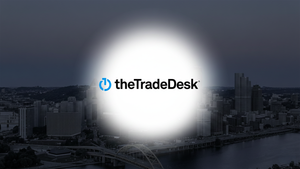
Toronto, ON – October 16, 2025 – TD Securities (TDS), the investment banking arm of Toronto-Dominion Bank (TSX: TD, NYSE: TD), has incurred a significant $2.39 million loss after closing a tactical short position on silver. This substantial setback comes as the precious metal continues an unprecedented rally, with prices soaring to levels not witnessed in decades. The event underscores the potent forces at play in the commodities market, highlighting the risks of betting against strong momentum, particularly amidst a deepening "silver squeeze" driven by critically low inventories and surging demand.
The loss serves as a stark reminder of the intense volatility and the structural shifts occurring within the silver market. As silver futures have touched record highs, outperforming gold with a nearly 75% year-to-date gain, TDS's experience validates the strength of the current bullish trend. This development not only reverberates through the trading desks of financial institutions but also signals a potential turning point for how market participants perceive and position themselves in the increasingly dynamic silver landscape.
Silver Squeeze Intensifies: TDS's Costly Bet Against the Tide
TD Securities' ill-fated short position was initiated when silver prices hovered around $48.37 an ounce, predicated on the expectation that a surge of supply would be unleashed as the metal approached the $50 mark. However, this projection proved inaccurate. Instead, the London silver markets experienced an acute "squeeze," characterized by "exploding higher" lease rates due to a severe scarcity of physical metal. This intense market pressure ultimately forced TDS to exit its position, crystallizing the $2.39 million loss. Despite this tactical miscalculation, TDS analysts, including Senior Commodity Strategist Daniel Ghali, have generally maintained a long-term bullish outlook for silver, anticipating renewed investment demand to further deplete already strained global stockpiles.
The timeline leading to this moment has been marked by a relentless ascent in silver prices throughout 2025. Futures hit a record $53.55 an ounce, surpassing the previous peak set in 1980. This rally is fueled by a perfect storm of factors: critically low inventory levels in major trading hubs like London, creating a severe physical shortage; a powerful short squeeze compelling bearish traders to cover their positions; and a significant influx of investment demand into silver-backed Exchange Traded Funds (ETFs). Concurrently, industrial demand for silver, particularly from sectors like solar energy, electric vehicles, and 5G infrastructure, has reached historic highs, accounting for nearly 60% of total consumption. This persistent supply deficit, now spanning seven consecutive years, points to a "structural bull market" for silver. Key players involved include major financial institutions like TDS, commodity traders, industrial consumers, and individual investors, all navigating a market characterized by increasing scarcity and price volatility. Initial market reactions to such losses typically involve increased scrutiny of short positions held by other large banks and a reinforcement of bullish sentiment among those holding long positions.
Winners and Losers in the Silver Rush
The ongoing silver rally, dramatically highlighted by TDS's recent loss, creates a clear delineation of winners and losers across the financial markets and related industries. Companies involved in silver mining, refining, and those with significant silver reserves are poised to be major beneficiaries.
Mining Companies: Silver mining companies are experiencing a significant boost to their revenues and profitability. As the price of silver surges, their mined output becomes exponentially more valuable. Companies like Pan American Silver Corp. (TSX: PAAS, NASDAQ: PAAS), First Majestic Silver Corp. (TSX: FR, NYSE: AG), and Wheaton Precious Metals Corp. (TSX: WPM, NYSE: WPM), which operate numerous silver mines globally, stand to gain substantially. Higher silver prices can lead to increased exploration budgets, expansion of existing operations, and the re-evaluation of previously uneconomical deposits. This could translate into higher dividends for shareholders and increased capital expenditures.
Precious Metals Streamers and Royalty Companies: Firms like Wheaton Precious Metals Corp. (TSX: WPM, NYSE: WPM) and Franco-Nevada Corporation (TSX: FNV, NYSE: FNV), which provide upfront financing to miners in exchange for a percentage of future production or revenue, benefit immensely. Their cost of acquiring silver is fixed or low, while the market price they receive for that silver escalates with the rally, leading to wider profit margins and robust cash flows.
Industrial Consumers: On the flip side, industries heavily reliant on silver as a raw material will face increased costs. Manufacturers of solar panels, electric vehicle components, medical devices, and electronics, which utilize silver for its superior conductivity and anti-bacterial properties, will see their input costs rise. While some of these costs might be passed on to consumers, it could erode profit margins for companies unable to absorb the increases or find viable substitutes. This could affect companies like First Solar, Inc. (NASDAQ: FSLR) or various electronics manufacturers. However, given the essential nature of silver in these high-growth sectors, demand is likely to remain inelastic, suggesting continued strong industrial consumption despite higher prices.
Financial Institutions with Short Positions: Beyond TDS, any financial institution or hedge fund holding substantial short positions in silver faces potential billions in losses. Reports indicate several major US banks hold significant short interest, representing a substantial portion of annual global silver production. As the silver squeeze intensifies, these entities could be forced into further short covering, exacerbating their losses and adding fuel to the rally. This scenario could lead to significant financial strain for those caught on the wrong side of the trade, potentially impacting their quarterly earnings and overall market sentiment towards their stocks.
Broader Implications and Historical Parallels
The current silver rally, punctuated by TDS's recent loss, is not merely an isolated market event; it is indicative of profound shifts within the global financial landscape and broader industry trends. This surge in silver prices fits squarely into a larger narrative of increasing commodity demand, driven by factors such as de-dollarization efforts, escalating geopolitical tensions, and a global push towards sustainable energy infrastructure. The role of silver in green technologies, from solar panels to electric vehicles, solidifies its position as a critical industrial metal, distinguishing it from gold, which is primarily a monetary asset. This dual demand profile—both industrial and investment—provides a robust foundation for its long-term appreciation.
The potential ripple effects of this silver surge extend across various sectors. Competitors and partners of companies reliant on silver will need to adapt to higher input costs, potentially leading to innovation in material science to find substitutes or a re-evaluation of supply chain strategies. For other precious metals like gold and platinum, silver's performance could act as a leading indicator, drawing investor attention to the broader precious metals complex. Regulatory bodies may also increase their scrutiny of the silver futures market, particularly concerning the concentration of large short positions. Critics have long argued that such positions have artificially suppressed silver prices, creating a disconnect between the paper market and physical supply. The current squeeze could reignite calls for greater transparency and oversight to ensure market integrity. Historically, comparisons can be drawn to the Hunt Brothers' attempt to corner the silver market in the late 1970s and early 1980s, which also led to dramatic price spikes and subsequent regulatory interventions. While the current rally is driven by fundamental supply-demand imbalances rather than a single manipulative entity, the impact on market dynamics and potential for systemic implications share certain parallels. The erosion of trust in the US dollar as a reliable store of value, as suggested by Daniel Ghali of TDS, serves as a unifying factor behind the broader commodity rally, echoing historical periods of currency instability.
The Road Ahead: Navigating a Volatile Silver Market
Looking ahead, the silver market appears poised for continued volatility and significant strategic adjustments. In the short term, the immediate focus will remain on the intensity of the short squeeze and the willingness of remaining large short sellers to cover their positions. Further short covering could propel prices even higher, creating a feedback loop that continues to attract speculative interest. However, as prices climb, the potential for profit-taking and the possibility of drawing more physical metal into the market could introduce periods of correction. Market participants will be closely watching inventory levels in major exchanges and lease rates for any signs of easing supply constraints.
In the long term, the structural bull market for silver is expected to persist, driven by robust industrial demand and renewed investment interest. Strategic pivots will be crucial for mining companies, which may accelerate exploration and development projects to capitalize on higher prices. Companies in green energy and electronics sectors will need to secure long-term supply agreements or explore recycling initiatives to mitigate cost pressures. Market opportunities will emerge for innovators in silver recycling technologies and for investors seeking exposure to companies with strong silver reserves and efficient mining operations. Potential scenarios include silver establishing a new, significantly higher price floor, or a more gradual appreciation punctuated by periods of consolidation. The ongoing global economic uncertainties and geopolitical landscape will also play a pivotal role in shaping investor sentiment towards safe-haven assets like silver.
A New Era for Silver: Enduring Impact and Investor Watchpoints
TD Securities' $2.39 million loss on its silver short position stands as a significant event, underscoring the formidable power of the current silver rally and the risks associated with underestimating fundamental market forces. The key takeaway is the undeniable strength of the silver squeeze, fueled by critically low physical inventories, surging industrial demand from green technologies, and a growing lack of confidence in traditional fiat currencies. This confluence of factors has pushed silver prices to historic highs and validated the long-term bullish outlook for the metal.
Moving forward, the silver market is likely to remain a focal point for investors and analysts alike. The event highlights a potential paradigm shift where the physical market's tightness is exerting unprecedented influence over paper market dynamics. Investors should assess their portfolios for adequate exposure to precious metals, particularly silver, given its dual role as an industrial and monetary asset. It is imperative to distinguish between tactical trading opportunities and the underlying structural trends that support a long-term bullish thesis. What investors should watch for in the coming months includes further developments in global industrial demand, especially from the renewable energy and EV sectors; changes in central bank policies, particularly interest rate decisions which impact the attractiveness of non-yielding assets; and, critically, any shifts in the physical inventory levels reported by major exchanges. The integrity of the futures market, especially concerning large short positions, will also remain a key area of scrutiny. The era of cheap silver may well be over, ushering in a new chapter where its strategic importance is fully recognized.
This content is intended for informational purposes only and is not financial advice






